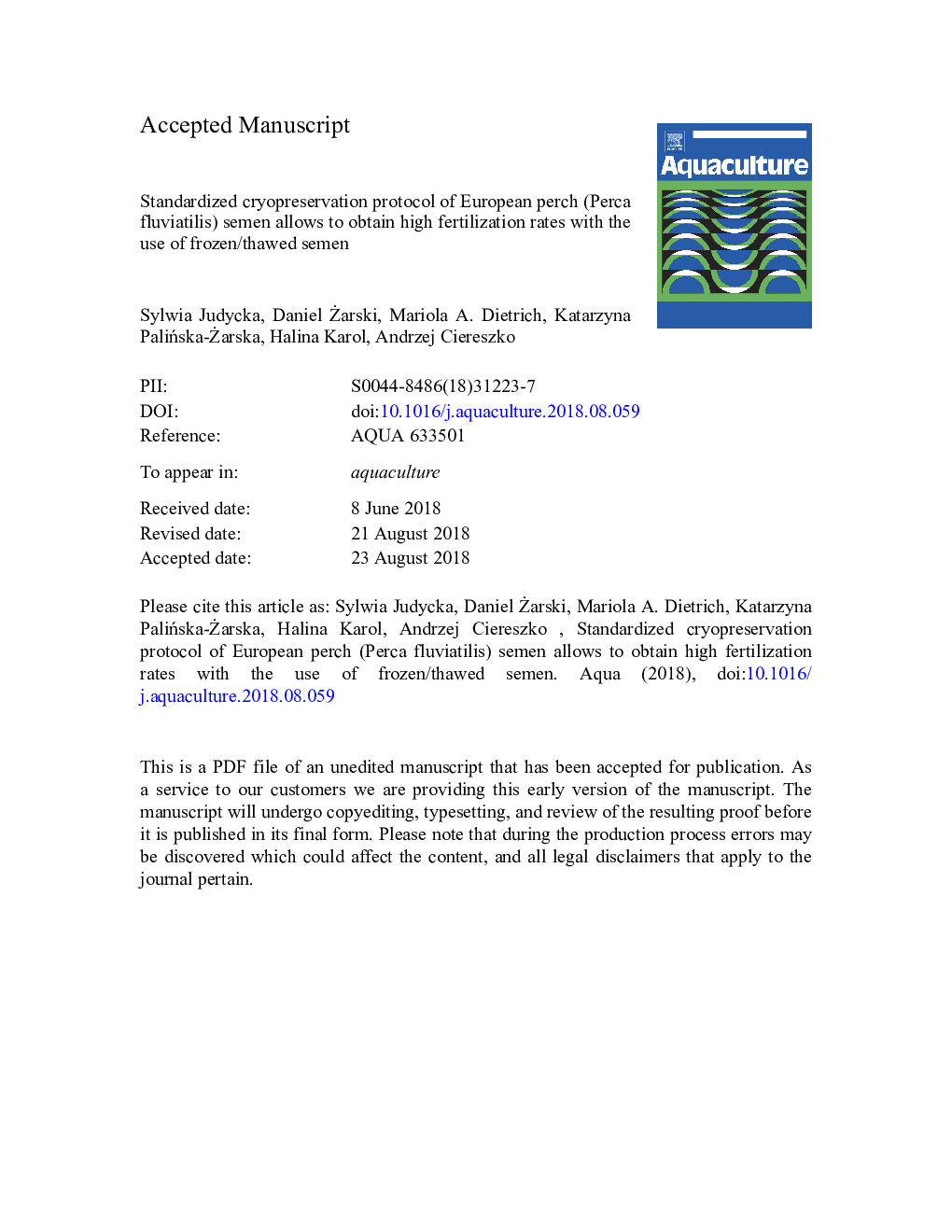| Article ID | Journal | Published Year | Pages | File Type |
|---|---|---|---|---|
| 10137333 | Aquaculture | 2019 | 35 Pages |
Abstract
The general aim of this study was to develop an efficient and standardized cryopreservation procedure for European perch semen. The specific aims of this study were: to test the effects of (i) final glucose concentration, (ii) final sperm concentration in the extended semen and (iii) the storage time of post-thaw semen on sperm motility parameters. Moreover, the effects of cryopreservation of semen on fertilization rates were tested at sperm:egg ratios ranging between 50,000:1 and 500,000:1 (iv), as well as the fertilization of 25â¯g portions of eggs (v). The range of optimal sperm concentrations in straws with high post-thaw sperm motility (66-73%) was quite wide, from 1.0 to 6.0â¯Ãâ¯109 spermatozoa mlâ1. The final glucose concentration of 0.30-0.34â¯M in 7.5% methanol produced the highest results of sperm motility (76â¯Â±â¯5%) after cryopreservation. Storage time of post-thaw semen negatively influenced sperm motility parameters. The fertilization rates while using cryopreserved semen were high (79%) and did not differ from fresh semen (85%). Similar results (73-77%) were obtained between sperm:egg ratio ranged from 50,000:1 to 500,000:1. Moreover, cryopreserved semen was successfully used for fertilization as much as 12,500 eggs (25â¯g). However, semen has to be used for fertilization within 2â¯min after thawing. In our opinion, standardizing the procedure of semen cryopreservation presented in this study is a prerequisite for the development of repeatable procedures and the future implementation of cryopreserved semen in hatchery practice. Further studies should focus on extension of time of post-thaw sperm motility, determination of optimal sperm:egg ratio at the conditions of large-scale fertilization and scaling up procedure to fertilize 50-150â¯g of eggs (one ribbon) at single application.
Related Topics
Life Sciences
Agricultural and Biological Sciences
Aquatic Science
Authors
Sylwia Judycka, Daniel Å»arski, Mariola A. Dietrich, Katarzyna PaliÅska-Å»arska, Halina Karol, Andrzej Ciereszko,
